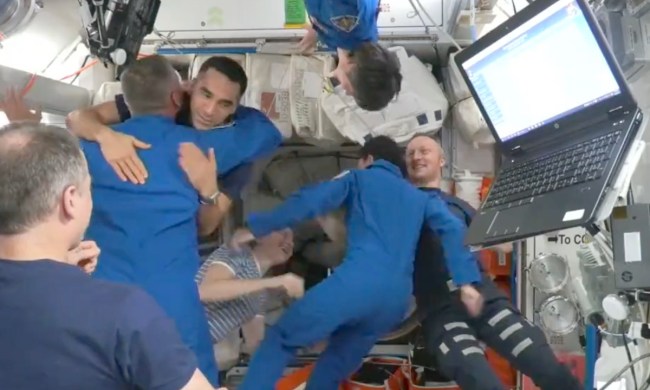The astronauts aboard the International Space Station (ISS) have taken time out to have some Olympic-focused fun.
While the ISS inhabitants spend most of their time working on science projects, they often down tools for special occasions, and the Paris Olympics, which kicked off this weekend, is one such occasion.
An amusing two-minute video (below) shows the astronauts participating in their own version of the Olympics, kicking off with a torch-bearing ceremony, which most definitely did not feature a naked flame.
“The 2024 Olympic Games officially began in Paris, France on July 26, with athletes coming from around the world to compete,” NASA said in a message accompanying the video. “Meanwhile, above the world — on our orbiting laboratory, the International Space Station — NASA’s astronauts are getting into the Olympic spirit.”
The footage shows the astronauts participating in their own Olympic events, which take on a rather different look due to the microgravity conditions on the station.
During a warm-up, Butch Wilmore, on the station after arriving there with Suni Williams aboard the troubled Starliner spacecraft in June, drinks a floating blob of water as part of his warm-up routine before throwing a shot through the station in a space-based shot-put event. With a lack of gravity in orbit, the shot just keeps on going … until it hits an interior wall of the orbital outpost, that is.
Another astronaut can be seen hurling a discus through the station, while another enjoys a spot of weightlifting in which the weights have been replaced by humans. The long-jump event and gymnastics also feature in the video.
NASA astronaut Matthew Dominick wraps up the video with the message: “We’ve had an absolute blast pretending to be Olympic athletes. We, of course, had the benefit of weightlessness. We can’t imagine how hard this must be, to be such a world-class athlete doing your sports under actual gravity. So from all of us aboard the International Space Station to every single athlete in the Olympic Games — god speed!”


